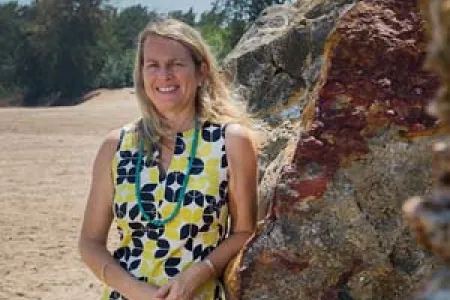Research: nomadic Bajo people move with the times
A researcher who has been looking at the livelihoods of Indonesia’s nomadic Bajo people for more than two decades has discovered that for this resilient population, diversity is key to their survival.
Charles Darwin University Associate Professor Natasha Stacey first travelled to Sulawesi in the Indonesian archipelago in 1994 to live with and study the traditional fisheries and livelihoods of the Bajo. More than 20 years later she returned to the sites she first studied as part of her PhD.
Dr Stacey said the Bajo had a century-plus history of fishing activity in the Timor and Arafura seas, in what are now Australian waters. “Each year the fishermen would leave Sulawesi on sail-powered lambo boats to travel south to Rote Island and on to the area inside the Australian Fishing Zone (AFZ) to fish for sea cucumber, shark, trochus shell, returning months later to sell their catch locally and to the China market.”
Now as head of CDU’s Natural Resource-based Livelihoods group, Dr Stacey has returned to Sulawesi to discover how the livelihood strategies and patterns of fishing had changed, speaking to many of the same fishermen and village families.
“Although the Bajo had been part of the shark fishery for many years there was a shift in the fishery during 2001-2003 with the importers of shark fin from China taking direct control of the fishery,” Dr Stacey said. “The fishery exploded with hundreds of other boats and fishers from other regions of Indonesia joining the search for shark.”
Dr Stacey said this continued pressure on resource sustainability in the Bajo’s home waters also corresponded with significant fishery policy shifts by Australia and the Australian Government increasing its surveillance.
“With provision of resources and purpose-built motorised boats (bodi) to replace sailing boats and an increase in demand for products, particularly shark fin, many Bajo fishermen began to target shark illegally in Australian waters and along the border regions,” she said.
“On my return the number of traditional boats still in use by the village had dwindled from 74 to 12,” she said. “Many had lost their boats, which had been confiscated due to illegal fishing, and some had also become involved in people smuggling.”
But Dr Stacey said the nomadic Bajo were very adaptable to change and livelihood diversification. They were philosophical about the change reflecting that ‘as one door closes, another one opens’.
“There has been evolution of Bajo livelihood strategies over a 100-year period, but with major change in last 10-15 years they had moved to other means to generate income and food supply,” she said. “The children I met in 1994 were now grown, married, and starting families of their own and had moved towards other livelihood options including small-scale tuna fishing and seaweed farming.”
